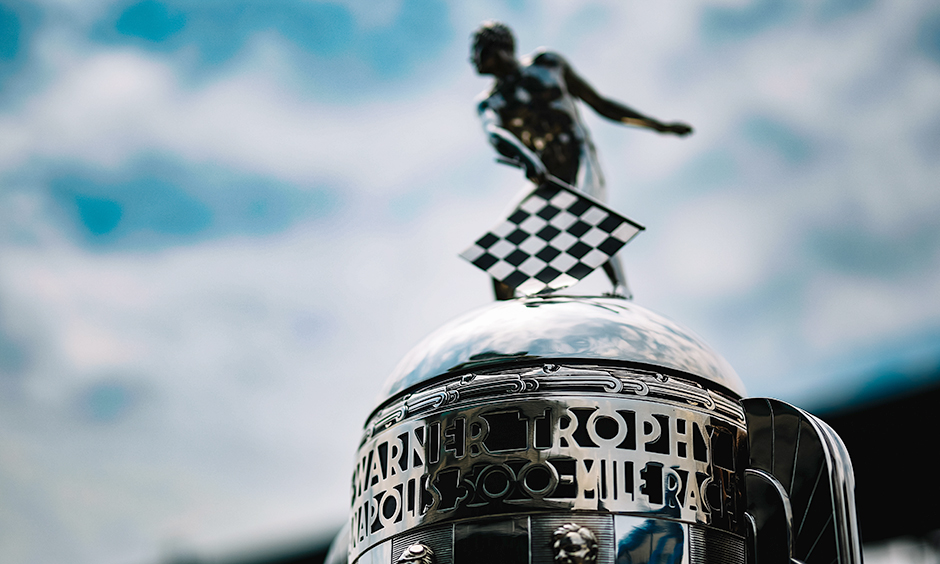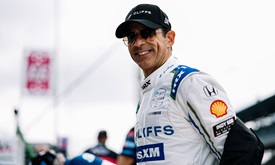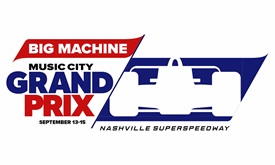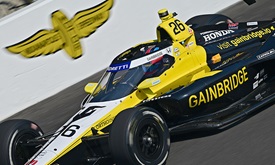Around the Corner: 108th Indianapolis 500
MAY 26, 2024
Finally, “The Greatest Spectacle in Racing” is at hand.
In a few hours, Indianapolis Motor Speedway comes to life with a crowd in excess of 330,000 gathering for the 108th Indianapolis 500 presented by Gainbridge. Pageantry and the roar of 33 race cars follow.
SEE: Starting Lineup
The field has delivered another interesting cast, led by three Team Penske drivers on the front row and a one-time NASCAR Cup Series champion lined up just behind them. In all, eight former “500” winners and six rookies will take the green flag for what will be a 200-lap sprint.
Live coverage on NBC, Universo, Peacock and the INDYCAR Radio Network begins at 11 a.m. ET.
A look at five important aspects of the day:
Start with the Start
Gates will open at 6 a.m. Over the six-plus hours that follow, anticipation builds.
Even the drivers will be excited.
“Man, (the morning) is as memorable for me as the end (of the day),” said Arrow McLaren’s Alexander Rossi, who won the 2016 race as a rookie. “I fell in love with his event at 9 that morning just because I had no idea (what to expect).
“You go through all of the processes to get to that point, and you hear about it, but you don’t realize until you open your bus door that morning and you’re like, it’s a life-changing kind of event.”
Rossi said he is particularly excited for first-timers like his teammate Kyle Larson to experience race morning. The other race newcomers are Chip Ganassi Racing drivers Marcus Armstrong, Linus Lundqvist and Kyffin Simpson along with Ed Carpenter Racing’s Christian Rasmussen and Meyer Shank Racing’s Tom Blomqvist.
“It is one of those things that will change your appreciation for this race and kind of motorsports, in general,” Rossi said.
There will be a host of historic cars driven around the 2.5-mile oval during the pre-race festivities, including the 2003 winner of the late Gil de Ferran. That car will be driven by 2019 champion Simon Pagenaud. The other drivers include Mario Andretti, Johnny Rutherford, Al Unser Jr., Jeff Gordon, Jimmie Johnson, Kenny Brack, Tony Kanaan, Lyn St. James, Donnie Beechler, Zach Veach and IMS President J. Douglas Boles.
When the green flag waves, Team Penske’s Scott McLaughlin will lead the high-speed rush to Turn 1.
Watch the Weather
Obviously, Mother Nature could put a damper on the morning buildup. It appears to be a coin toss on whether wet conditions will be present during the day.
For starters, the race becomes official a lap past the halfway point, so the competitors could be targeting Lap 101 as when they need to be in the front of the pack. There have been seven rain-shortened races, the most recent in 2007 when Dario Franchitti splashed his way to Victory Lane after 166 laps. In 2004, Buddy Rice won at Lap 180. The shortest “500” was in 1976 when Johnny Rutherford took the checkered flag on Lap 102.
Given the amount of daylight in Indianapolis this time of year, the race could start deep into the 4 o’clock hour and still safely complete 500 miles. The past three races have finished in fewer than three hours. The last postponement was in 1997 when the first 15 laps were held on Monday and the remaining 185 laps on Tuesday. That was the second of Arie Luyendyk’s wins.
Temperatures today shouldn’t be an issue. The forecast has targeted projected temperatures around 80 degrees.
The Strategy of the Day
Is it a race to the rain or a classic 500-mile race? That’s the question of the day.
Again, a winner can be determined at any point after the race passes halfway, but officials will do everything within their power to allow for the full distance to be completed.
Because of last week’s rain, which reduced running on two practice days, teams have an ample supply of Firestone tires. The question will be, how often will they choose to stop for a new set of them?
Based on recent history, the first round of pit stops could come as early as Lap 26 and as late as Lap 33, and teams will prefer to stop under a yellow for caution rather than a green. But that’s not always possible. Last year, the first caution didn’t come until Lap 92, which means every driver had already stopped at least twice.
The top 14 finishers – all on the lead lap – split the strategies. Seven drivers, including the top three finishers, completed the distance on five stops, the other seven made six.
Larson’s Day
This is one of the more intriguing aspects of Sunday. Will he stay or will he go?
Obviously, Larson wants the opportunity to parlay his fifth-place qualifying position into his first chance to win the “500,” but he has his day job to think about, and it isn’t clear what NASCAR will do if one of its championship contenders misses the start of the Coca-Cola 600 at Charlotte Motor Speedway. By rule, NASCAR could keep such a driver out of its title-deciding playoffs.
Larson has said all the right things, which is to say he doesn’t know what the decision will be if the “500” is significantly delayed. But there seems to be a growing sense that Larson will prioritize Indy given this unique opportunity. After all, this could be his only chance to win the event.
One thing is clear: 2013 “500” winner Kanaan will not take Larson’s place if he isn’t here for the green flag. INDYCAR no longer allows replacement drivers once the race starts.
This is the 10th time a driver has attempted to run Indy and Charlotte on the same day. Six of the previous nine led to top-10 Indy finishes, with Robby Gordon (2000), Tony Stewart (2001) and Kurt Busch (2014) finishing sixth. Only Stewart (1999 and 2001) completed all 1,100 miles.
The Race Itself
Rossi estimated there are 10 drivers he thinks have a legitimate chance to win the “500.” There certainly are more under the right circumstances.
Rather than walk through all the variables that could lead a driver to Victory Lane, let’s consider some of these important trends:
Former “500” winners had three of the fastest four cars in qualifying: Will Power (second), Josef Newgarden (third) and Rossi (fourth).
The pole winner has only won once since 2009, Pagenaud in 2019.
Larson is the only rookie starting in the top 15 positions. He starts fifth.
The driver leading the most laps has failed to win 11 of the past 13 races. The exceptions: Ryan Hunter-Reay in 2014 and Pagenaud in 2019.
The past three winners – Helio Castroneves in 2021, Marcus Ericsson in 2022 and Newgarden last year – have combined to lead only 38 laps in their victories. That’s an average of 12.67 laps.
If McLaughlin leads the first lap as the pole winner, it will be his first led lap in the event despite three previous starts.
Team Penske has won a record 19 times, which is more than all the other teams in this field combined. The others: Chip Ganassi Racing (six), Andretti Global (five), Rahal Letterman Lanigan Racing (two) and AJ Foyt Racing (two). Bryan Herta, the strategist on Kyle Kirkwood’s Andretti Global car, has been a team owner of two race winners (Dan Wheldon in 2011 and Rossi in 2016).
Scott Dixon, who holds the career record for laps led with 665, might be starting career-low 21st, but he has led 15 of his 21 races for a reason. A 16th will break a tie he has with Kanaan.
Cars with single-digit numbers have won 55 of the 107 races (51.4 percent).
Over the past 10 years, 10 drivers who led in the final 10 laps failed to win. The moral of the story: Anything can happen late in the race.





















